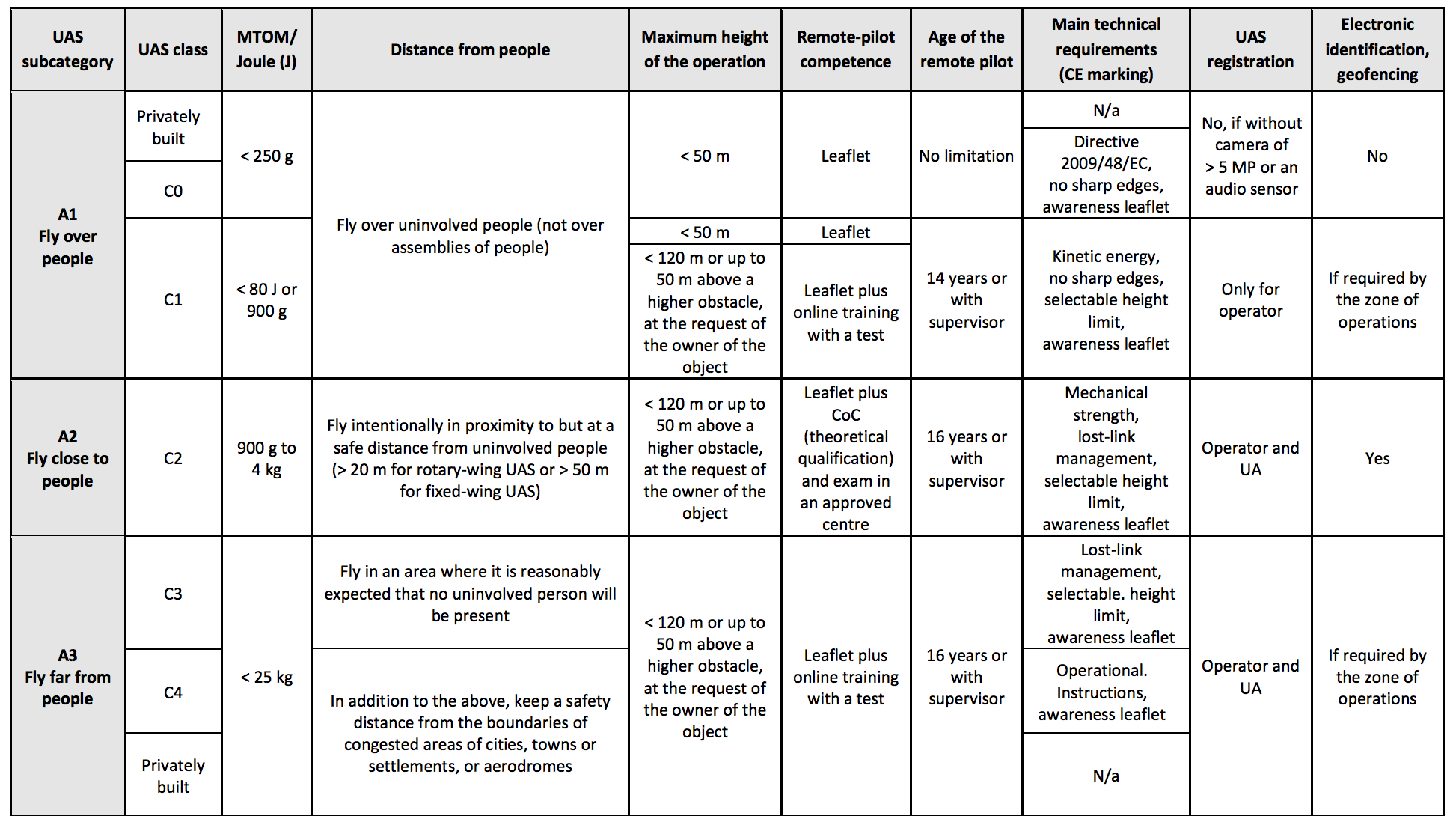Background
Small Unmanned Aerial Vehicles (UAVs), commonly known as Drones are being increasingly used in the European Union. The economic sector is growing and brings new jobs, but under a fragmented European regulatory framework.
Basic national safety rules apply, but the rules differ across the EU and a number of key safeguards are not addressed in a coherent way.
That’s why, following a request from the European Commission, EU Member States and industry stakeholders, the European Aviation Safety Agency (EASA) started to work on a proposal for an EU wide small drones regulatory framework.
The framework establishes three categories with different safety requirements, proportionate to the risk:
-
“open” (low risk) is an Unmanned Aircraft (UA) operation category that, considering the risks involved, does not require a prior authorization by a national competent authority before the operation takes place;
-
“specific” (medium risk) is an UA operation category that, considering the risks involved, requires an authorization by a national competent authority before the operation takes place and takes into account the mitigation measures identified in an operational risk assessment, except for certain standard scenarios where a declaration by the operator is sufficient;
-
“certified” (high risk) is a UA operation category that, considering the risks involved, requires the certification of the Unmanned Arial System (UAS), a licensed remote pilot and an operator approved by a national competent authority, to ensure an appropriate level of safety.
Timeline
-
Following the publication of a Technical Opinion in December 2015, a ‘Prototype’ regulation was drafted for the ‘open’ and ‘specific’ categories.
-
In August 2016, the ‘Prototype’ regulation was published.
-
A considerable number of comments has been received leading to the publication of a document on 5 May 2017 called a Notice of Proposed Amendment (NPA).
The NPA has taken into consideration the developments in the international arena e.g. work done in the International Civil Aviation Organization (ICAO); in the Joint Authorities for the Rulemaking of Unmanned Systems (JARUS) and of course in the USA (Federal Aviation Administration- FAA).
The proposed rules on small drones:
You can find a summary of the proposal in the table below:
Next Steps: Have your say until 12 August 2017
All interested parties are welcome to comment this proposal from 12 May until 12 August 2017: you can submit your comments here.
As agricultural drone software provider, we at AgroHelper believe that industry specialists shall have their say — please share this article and let the drone operator’s voice be heard by legislators!


